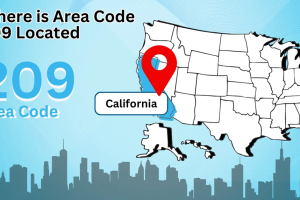Content Attributes
Introduction
Public Relations (PR) and advertising are two key components of marketing and communications strategies. While both aim to promote a company, brand, or product, they differ in their approach, purpose, and execution. Understanding the distinctions between public relations and advertising is crucial for businesses to effectively utilize these strategies to achieve their marketing goals.
Public Relations vs Advertising

Here’s a table summarizing the key differences between public relations and advertising:
| Factors | Public Relations | Advertising |
|---|---|---|
| Purpose | Relationship-building, reputation management, shaping public perception | Promoting products, and services, generating awareness and sales |
| Control | Limited control over media coverage and timing | Complete control over content, placement, and timing |
| Credibility | Relies on earned media and third-party endorsements | Viewed with skepticism as paid promotions |
| Cost | In-house execution can be cost-effective, but PR agencies may have higher costs | Costs vary depending on media outlets, reach, and frequency |
| Reach and Targeting | Dependent on media outlets and their interest in covering PR content | Allows precise targeting and reaching specific audiences |
| Longevity | Can have a lasting impact on reputation and public perception | Time-bound campaigns, short-term impact |
| Measurement | Qualitative evaluation, media monitoring, sentiment analysis | Quantitative metrics such as impressions, click-through rates, conversions |
| Crisis Management | Crucial in managing crises, handling communication, and public statements | Can support crisis communication efforts, reinforcing key messages |
This table provides a concise overview of the main differences between public relations and advertising, highlighting their unique characteristics and areas of focus.
Purpose
Advertising: Advertising primarily focuses on promoting products, services, or brands through paid messages. Its main purpose is to create awareness, generate interest, and persuade consumers to make a purchase or take a specific action. The goal of advertising is often to increase sales and drive immediate results.
Public Relations: On the other hand, is more focused on building and maintaining relationships with various stakeholders, including the media, customers, employees, and the public. The purpose of PR is to shape public perception, enhance reputation, and establish credibility for a company or brand. PR efforts are aimed at fostering goodwill, trust, and long-term positive relationships.
Control
Advertising: Advertisers have complete control over the content, placement, and timing of their messages. They can design and craft advertisements according to their specific objectives and target audience. Advertisements are typically created by the company or its advertising agency and are placed in chosen media outlets.
Public Relations: Unlike advertising, It relies heavily on earned media. This means that PR professionals do not have direct control over the content, placement, or timing of their messages. They pitch stories, press releases, or other forms of content to journalists and media outlets with the hope of securing media coverage. The media outlets then have the discretion to decide whether or not to feature the content and how it will be presented.
Credibility
Advertising: While advertising allows for precise messaging and control, consumers are aware that advertisements are paid promotions. As a result, there can be a certain level of skepticism towards ads, as they are perceived as biased or self-serving. However, effective and creative advertising campaigns can still influence consumer behavior and generate positive brand associations.
Public Relations: It often carries a higher degree of credibility compared to advertising. When a story or message is covered by the media or shared through third-party endorsements. It tends to be viewed as more objective and trustworthy. Positive media coverage, favorable reviews, or endorsements from influencers can enhance a brand’s credibility and reputation.
Cost
Advertising: Advertising is a paid form of communication, and costs can vary significantly depending on the chosen media, reach, and frequency of the ads. Traditional advertising channels like TV, radio, and print can be expensive, especially for small businesses. Digital advertising offers more cost-effective options, such as pay-per-click (PPC) advertising or social media advertising, with flexible budgeting and targeting options.
Public Relations: When executed in-house, can be more cost-effective compared to advertising. However, if a company decides to hire a PR agency, costs can increase significantly. PR agencies typically charge monthly retainers or project-based fees, which can vary based on the agency’s reputation, expertise, and the scope of work required.
Reach and Targeting
Advertising: Advertising provides businesses with the ability to target specific audiences and reach a wide range of potential customers. Advertisements can be strategically placed in media outlets, websites, or social media platforms that align with the target audience’s demographics, interests, and behaviors. This enables advertisers to maximize their reach and tailor their messages to specific market segments.
Public Relations: This can also target specific audiences, but the reach is primarily dependent on the media outlets that choose to cover the PR content. PR professionals often employ media relations strategies to build relationships with journalists and influencers who can amplify their messages to a larger audience. The reach of PR efforts is not as easily controllable or predictable as advertising, as it relies on the interest and discretion of the media outlets to cover the stories.
Longevity
Advertising: Advertising campaigns have a defined lifespan and are typically time-bound. Advertisements are launched for a specific period and then replaced or updated with new campaigns. While some advertising campaigns may have a lasting impact on brand perception, the immediate goal is to drive short-term results, such as increased sales or website traffic.
Public Relations: Its efforts can have a longer-lasting impact compared to advertising. Positive media coverage, press releases, or favorable reviews can continue to shape public perception and influence consumer attitudes toward a brand or company over an extended period. PR activities often focus on building a positive reputation and maintaining relationships with stakeholders in the long run.
Measurement and Evaluation
Advertising: Advertising allows for more direct measurement and evaluation of results. Advertisers can track metrics such as impressions, click-through rates, conversions, and sales attributed to specific advertising campaigns. These quantitative data points provide insights into the effectiveness of the advertisements and enable advertisers to make data-driven decisions and optimize their campaigns.
Public Relations: Measuring the impact of public relations efforts can be more challenging. While some metrics, such as media mentions or the number of press releases distributed, can be quantified, evaluating the overall impact on reputation and public perception is more qualitative in nature. PR professionals often rely on media monitoring, sentiment analysis, and surveys to gauge the success of their efforts, but it can be difficult to directly attribute business outcomes solely to PR activities.
Crisis Management
Advertising: Advertising is not typically the primary tool used for crisis management. In times of crisis, advertising may play a role in communicating important information or addressing public concerns, but it is often PR that takes the lead in managing the situation. Advertising can be used to support PR efforts during a crisis by reinforcing key messages or promoting actions taken to resolve the situation.
Public Relations: It is crucial in crisis management. PR professionals are responsible for creating and executing crisis communication strategies, handling media inquiries, managing public statements, and mitigating reputational damage during challenging times. PR’s focus on building relationships and maintaining goodwill with stakeholders positions it as a vital function in crisis management.
Conclusion
In conclusion, public relations and advertising are distinct yet complementary marketing tools. Advertising focuses on paid promotions, providing control over messaging and precise targeting, while public relations centers around building relationships, reputation management, and leveraging earned media.
While advertising offers direct control and measurable results, public relations carries credibility and longevity. Both strategies have their place in an integrated marketing approach, with advertising delivering immediate impact and PR cultivating long-term relationships and trust. Understanding the differences between public relations and advertising empowers businesses to make informed decisions and harness the strengths of each to achieve their marketing goals effectively.
Faq on Public Relations vs Advertising
The main difference lies in their purpose and approach. It focuses on building relationships, managing reputation, and shaping public perception through earned media and third-party endorsements. Advertising, on the other hand, aims to promote products or services through paid messages, with the goal of generating awareness, sales, and immediate results.
In public relations, the control over content is limited. PR professionals pitch stories and press releases to media outlets, but it is ultimately up to the outlets to decide whether or not to cover the content and how it will be presented. In advertising, the advertiser has complete control over the content, placement, and timing of their messages.
Public relations generally carries a higher degree of credibility compared to advertising. When a story or message is covered by the media or shared through third-party endorsements, it is perceived as more objective and trustworthy. Advertising, being a paid form of communication, can be viewed with some skepticism as it is seen as biased or self-serving.
The cost-effectiveness depends on the specific context and goals of a marketing campaign. Public relations, when executed in-house, can be more cost-effective as it primarily involves building relationships and creating content. However, if a company hires a PR agency, costs can increase. Advertising costs can vary significantly depending on the chosen media outlets, reach, and frequency of the ads.
Both public relations and advertising can target specific audiences. Advertising allows precise targeting by placing ads in media outlets, websites, or social media platforms that align with the target audience’s demographics, interests, and behaviors. It employs media relations strategies to build relationships with journalists and influencers who can help reach specific audiences through earned media coverage.



